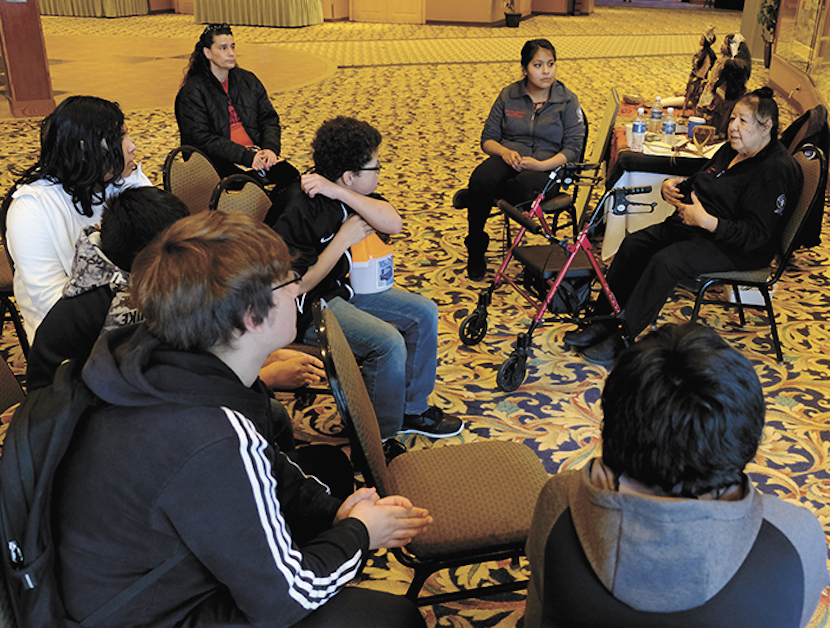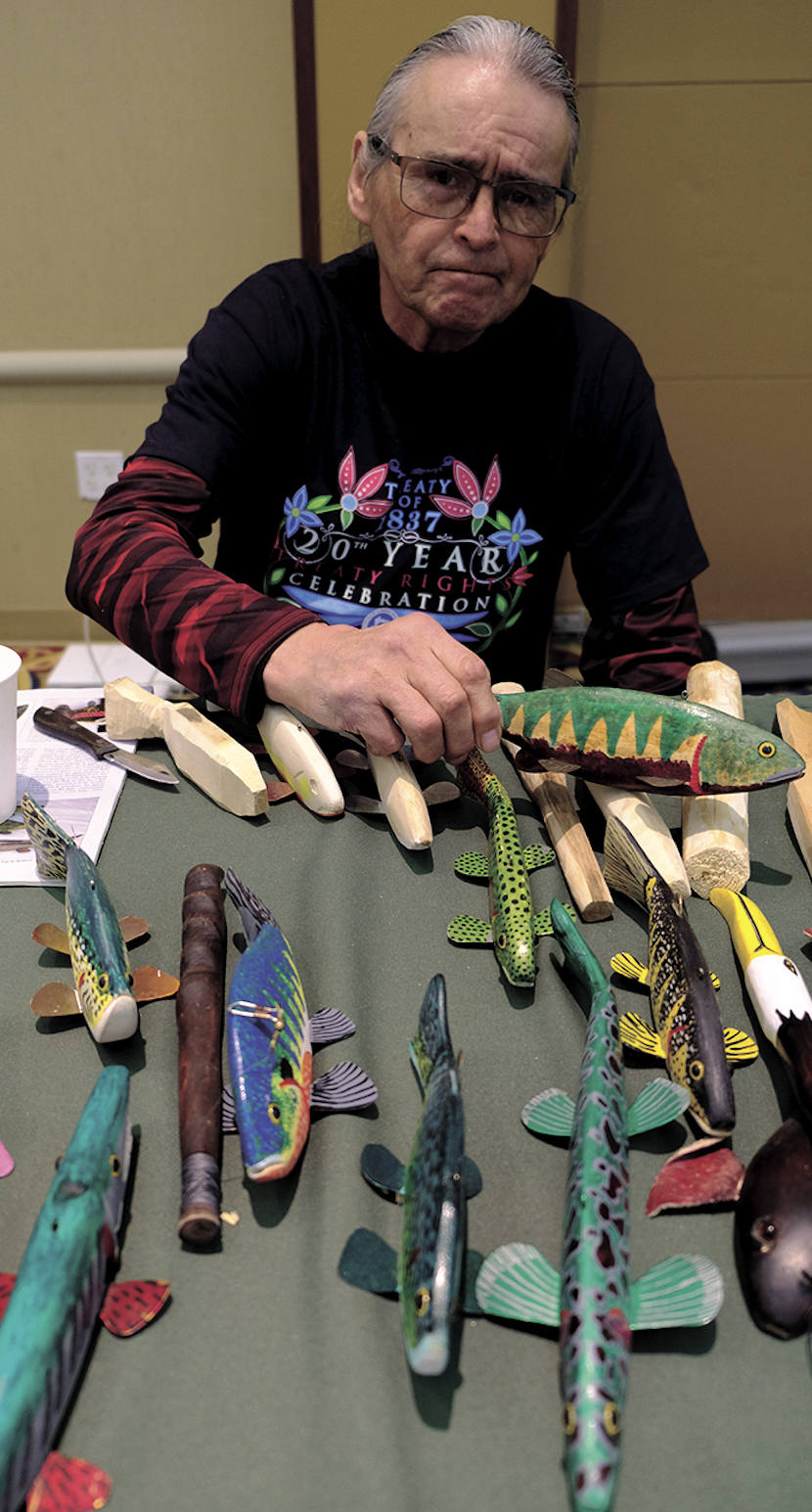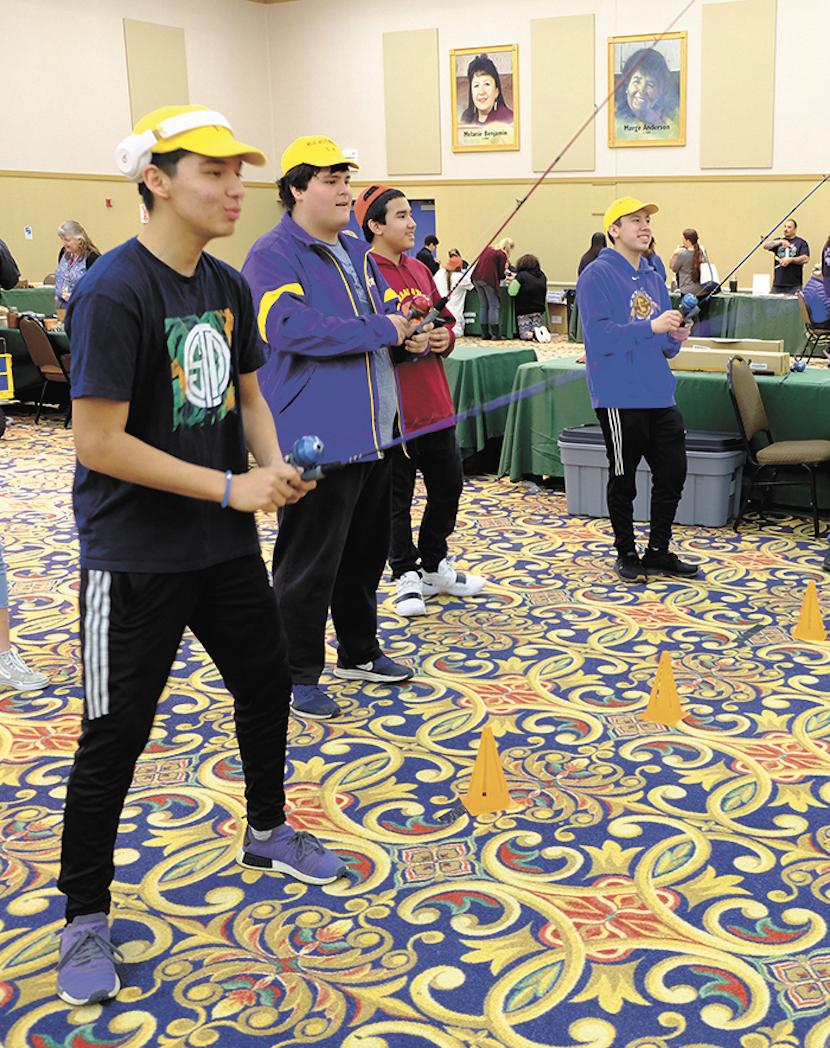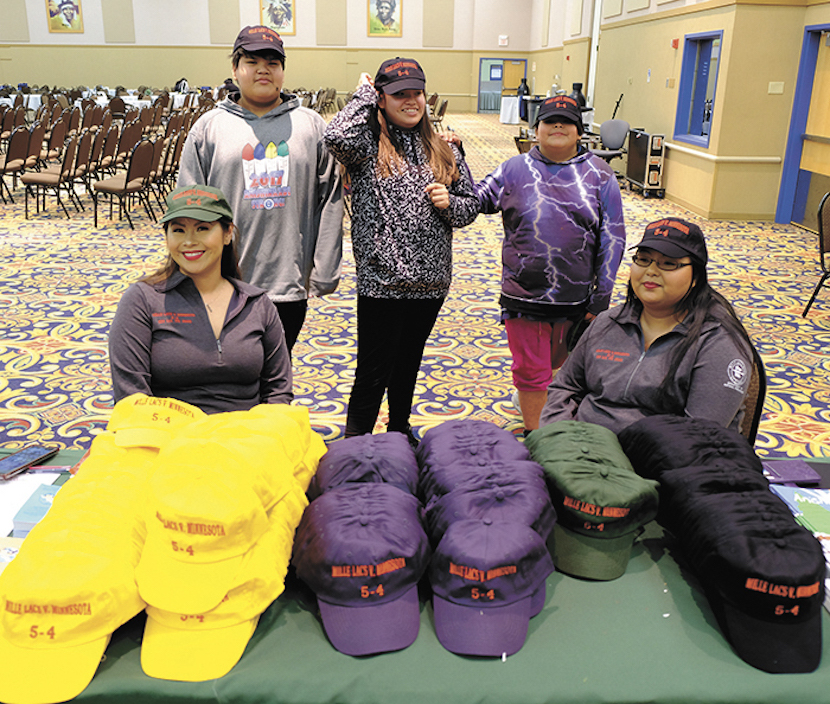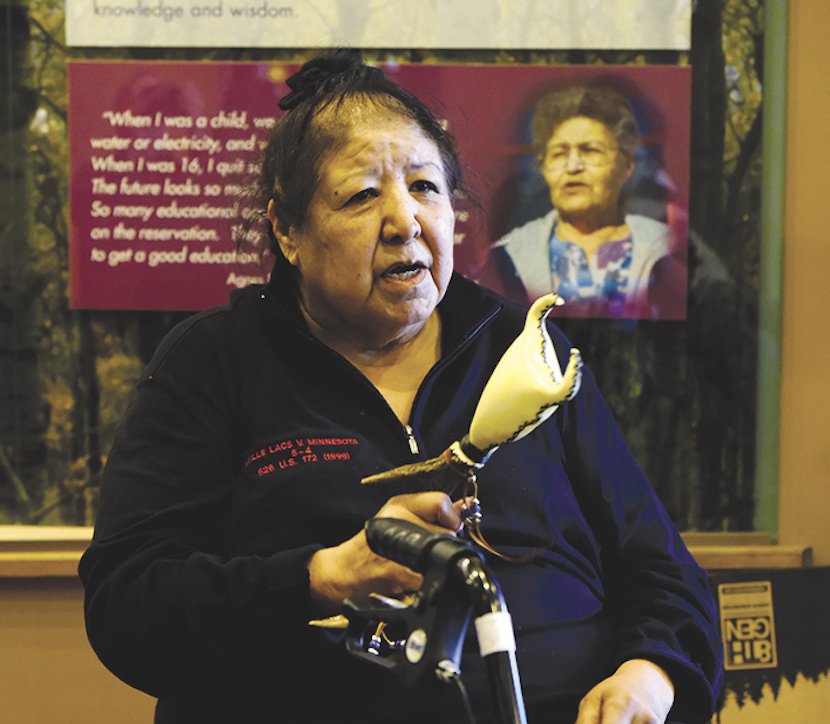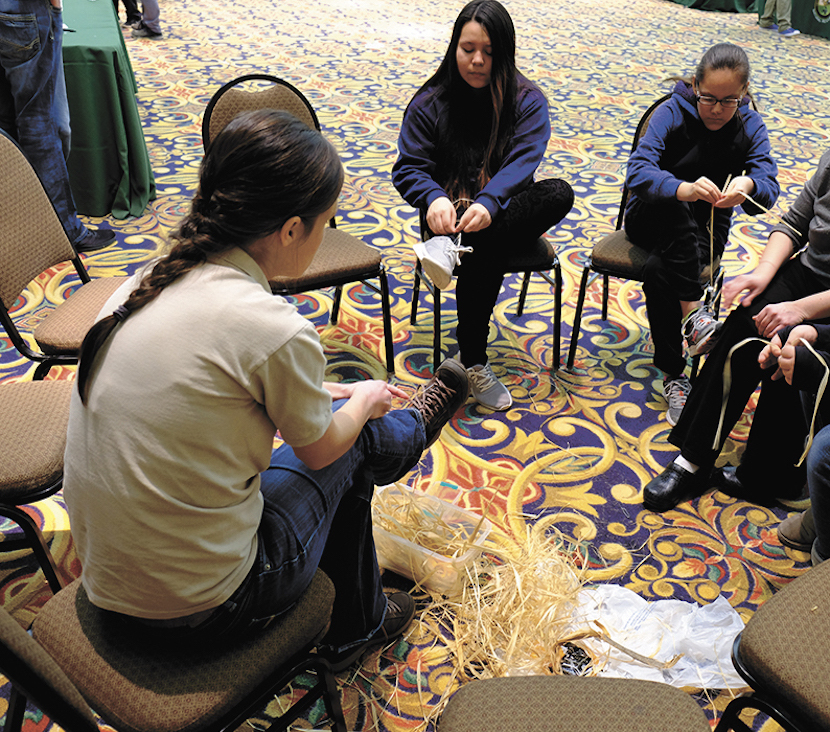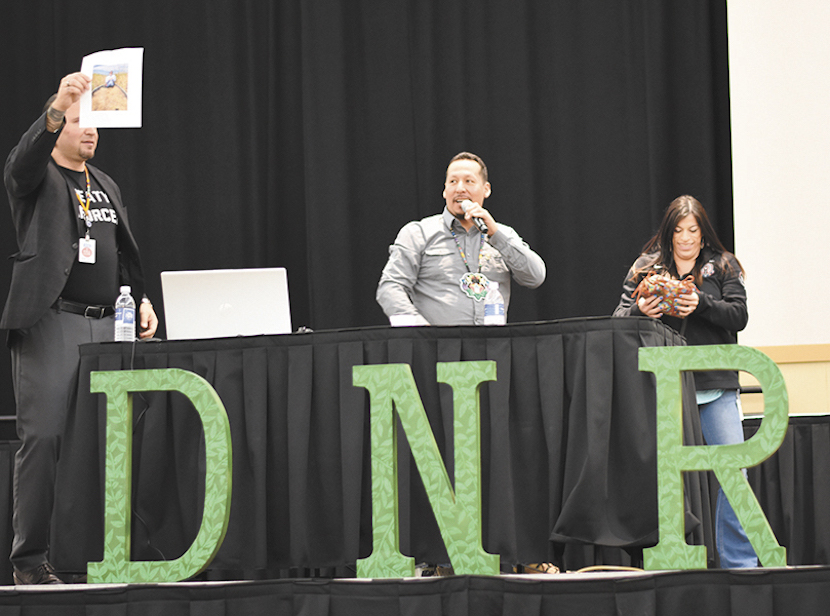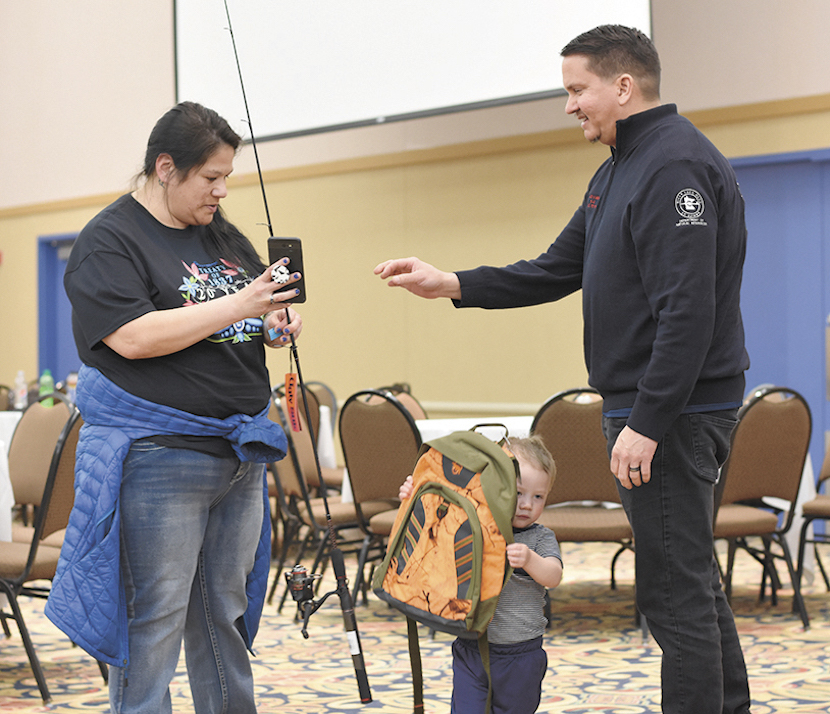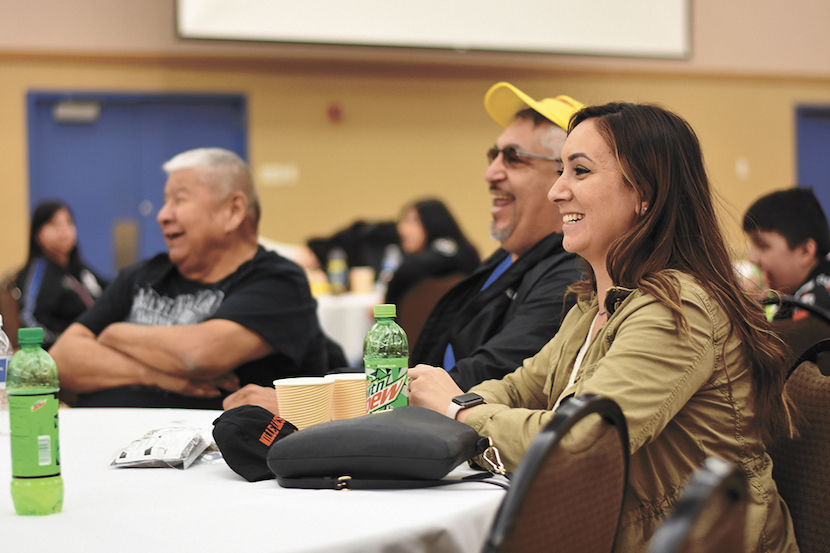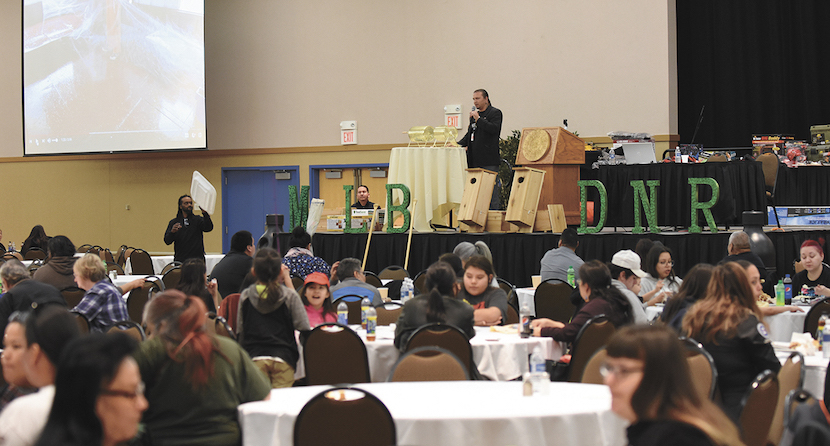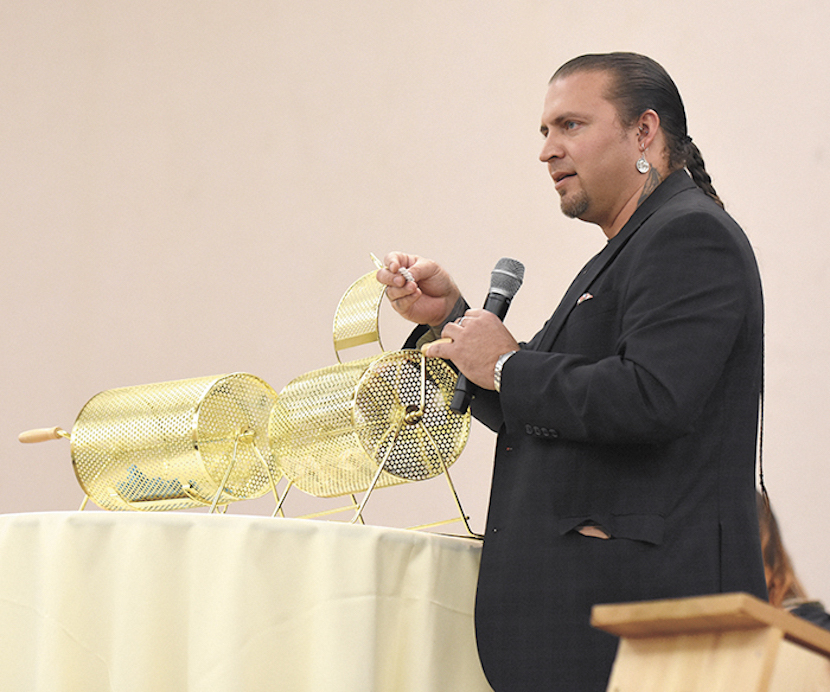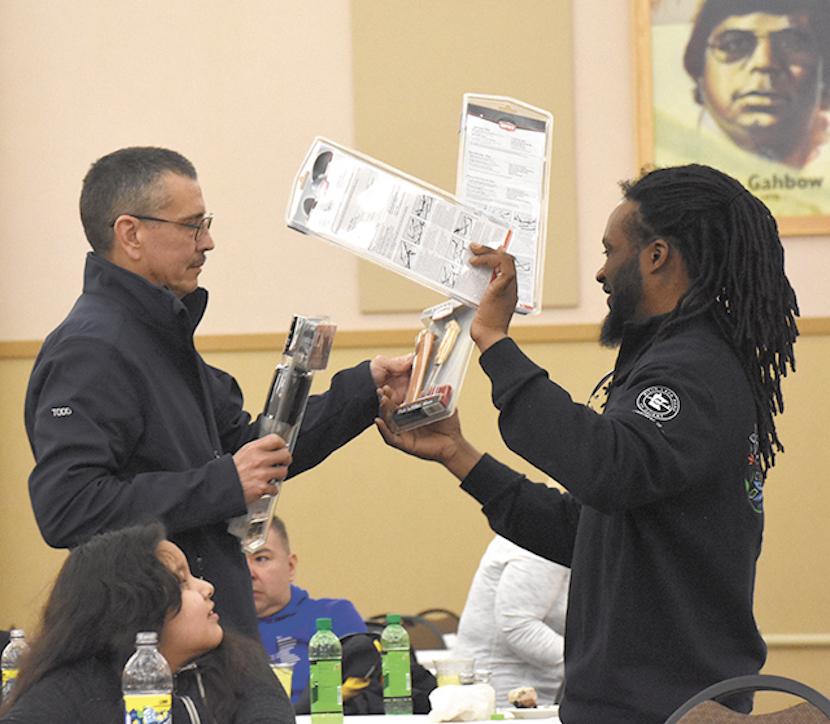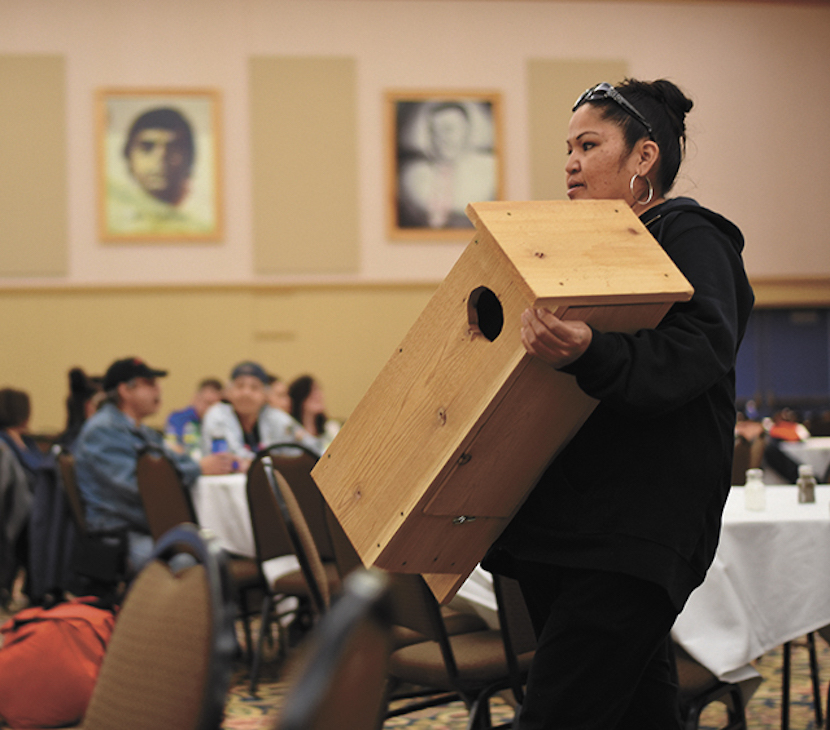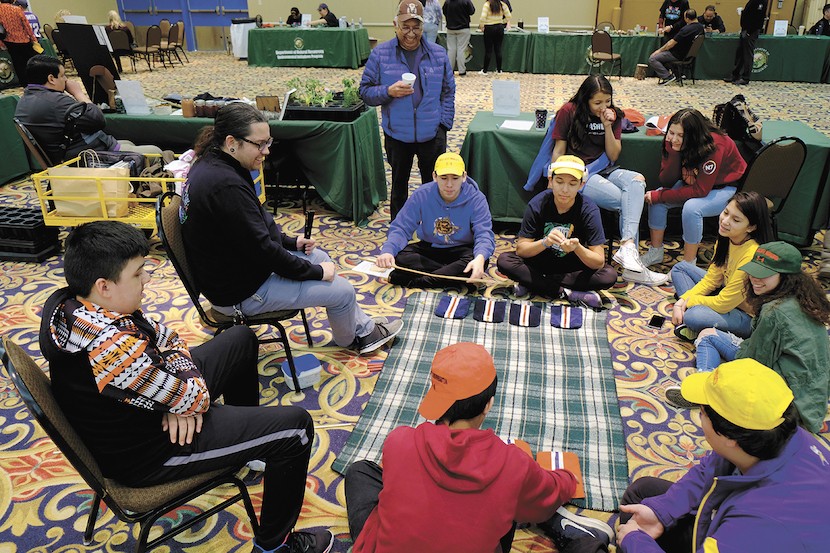
Each year, on or near March 24, the Mille Lacs Band celebrates a holiday recognizing the 1999 Supreme Court decision affirming Anishinaabe rights to hunt, fish, and gather in the territory ceded by the Treaty of 1837.
But this year, Commissioner of Natural Resources Bradley Harrington decided to mark the 20th anniversary of that historic occasion with a three-day festival.
On Wednesday, March 20, DNR staff devoted their day to educating the next generation — who weren’t yet born in 1999 — on the importance of the case, as well as the cultural practices and knowledge that underlie the exercise of treaty rights.
Students from Nay Ah Shing, Isle, Onamia, Minisinaakwaang, and Pine Grove schools came to Grand Casino Mille Lacs for fun and learning. They heard stories told by Elder Natalie Weyaus, practiced casting with Biologist Carl Klimah, played the moccasin game with Archivist Mike Wilson, drank cedar and rose hip tea prepared by Ethnobotanist Linda Waataa’b Bishop, learned about hemp with Agriculture Coordinator Jonathan Houle, and built wind generators with Andy and Li Boyd of the Environmental Program. Jordan Williams worked with the kids to make spearing decoys, and Perry Bunting and Chad Weiss showed off their wood duck houses.
The tribal DNR was joined by Great Lakes Fish and Wildlife Commission staff, Erin Fallon of the Minnesota DNR, master carver Jerome LaBarge of Lac du Flambeau, and vendors selling traditional artwork.
On Thursday, March 21, Jason Schlender, Vice Chairman of the Lac Courte Oreilles Band and Chairman of the Voigt Task Force, gave a fascinating presentation titled "Gaa-Pazagwadininjig: The Ones That Are Stood Up."
Jason spoke of how the 1999 5-4 Supreme Court decision paved the way for a "cultural renaissance." He cited several examples:
Language revitalization efforts through GLIFWC and tribal schools,
The Sandy Lake Mikwendaagoziwag (We remember them) ceremony commemorating the Sandy Lake Tragedy of 1850,
The Healing Circle Run/Walk held each summer to bring together the region’s Ojibwe bands,
Writing and artistic expression by Anishinaabe including Anton and David Treuer, Brenda Child, Steve Premo, Sarah Howes, Lee Obizaan Staples, and Chato Gonzalez.
He emphasized the importance of Obizaan and Chato’s work on funerals and drum ceremonies, saying it is crucial to document those traditions.
Jason also summarized the history of treaty rights decisions that led to the Mille Lacs case, from legal challenges to citations in the 1960s and ’70s, to the Voigt Decision in 1983 affirming the rights of Ojibwe to harvest in ceded territories in Wisconsin.
On Friday, March 22, the Band government closed at noon so employees could attend lunch and an afternoon celebration.
Chief Executive Melanie Benjamin recognized the anniversary by remembering those who fought long and hard in the treaty lawsuit, which was filed in 1990 and finally resolved in 1999.
“March 24, 1999 is a date the Band will never forget," said Melanie. "On this day, we are reminded of our courageous leaders who fought this battle all the way to the U.S. Supreme Court, showing generations to come that our tribal sovereignty and inherent rights must never be compromised. Twenty years later, Mille Lacs Band members proudly exercise our treaty rights, and we will continue to teach our youth our traditional ways for many years to come.”
When the news of the verdict came out, the Band held a news conference in District I. “Today, the United States has kept a promise,” Chief Executive Marge Anderson said, “a promise that agreements are meant to be honored, not broken.”
Mille Lacs Band Secretary-Treasurer Herb Weyaus said, “Today my sadness is gone. As a sovereign nation, we accept the responsibility that comes with the Supreme Court’s decision. We have preserved these resources for centuries because they are central to our culture, and we are ready to work with our Band members and our neighbors to protect the natural environment.”
COURT RULES 5-4 IN FAVOR OF MILLE LACS Source: oyez.org.
Facts of the case
Mille Lacs Band of Chippewa Indians ceded land in present-day Minnesota to the U.S. in an 1837 treaty. In return, the U.S. recognized the Mille Lacs Band's inherent hunting, fishing, and gathering rights on the ceded land. An 1850 Executive Order by President Taylor ordered the removal of the Mille Lacs Band and revoked their usufructuary rights. An 1855 treaty set aside reservation lands for the Mille Lacs Band, but did not mention their rights. The Mille Lacs Band sued, seeking a declaratory judgment stating that they retained their usufructuary rights and an injunction to prevent the state's interference with those rights. The District Court ultimately ruled that the Mille Lacs Band retained their usufructuary rights under the 1837 Treaty. The Court of Appeals affirmed. The courts rejected arguments that the 1850 Executive Order abrogated the usufructuary rights guaranteed by the 1837 treaty and that Minnesota's entrance into the Union in 1858 extinguished any Indian treaty rights under the "equal footing doctrine."
Question
Does the Mille Lacs Band of Chippewa Indians have usufructuary rights on land now part of the state of Minnesota?
Conclusion
Yes. In a 5-4 decision, authored by Justice Sandra Day O'Connor, the Court ruled that the Mille Lacs Band of Chippewa Indians does have usufructuary rights that were guaranteed to them by the 1837 Treaty. After an examination of the historical record, the Court held that the 1850 Executive Order was ineffective to terminate Mille Lacs Band's usufructuary rights, that the Mille Lacs Band did not relinquish its 1837 Treaty rights in the 1855 Treaty, and that the Mille Lacs Band's usufructuary rights were not extinguished when Minnesota was admitted to the Union.
